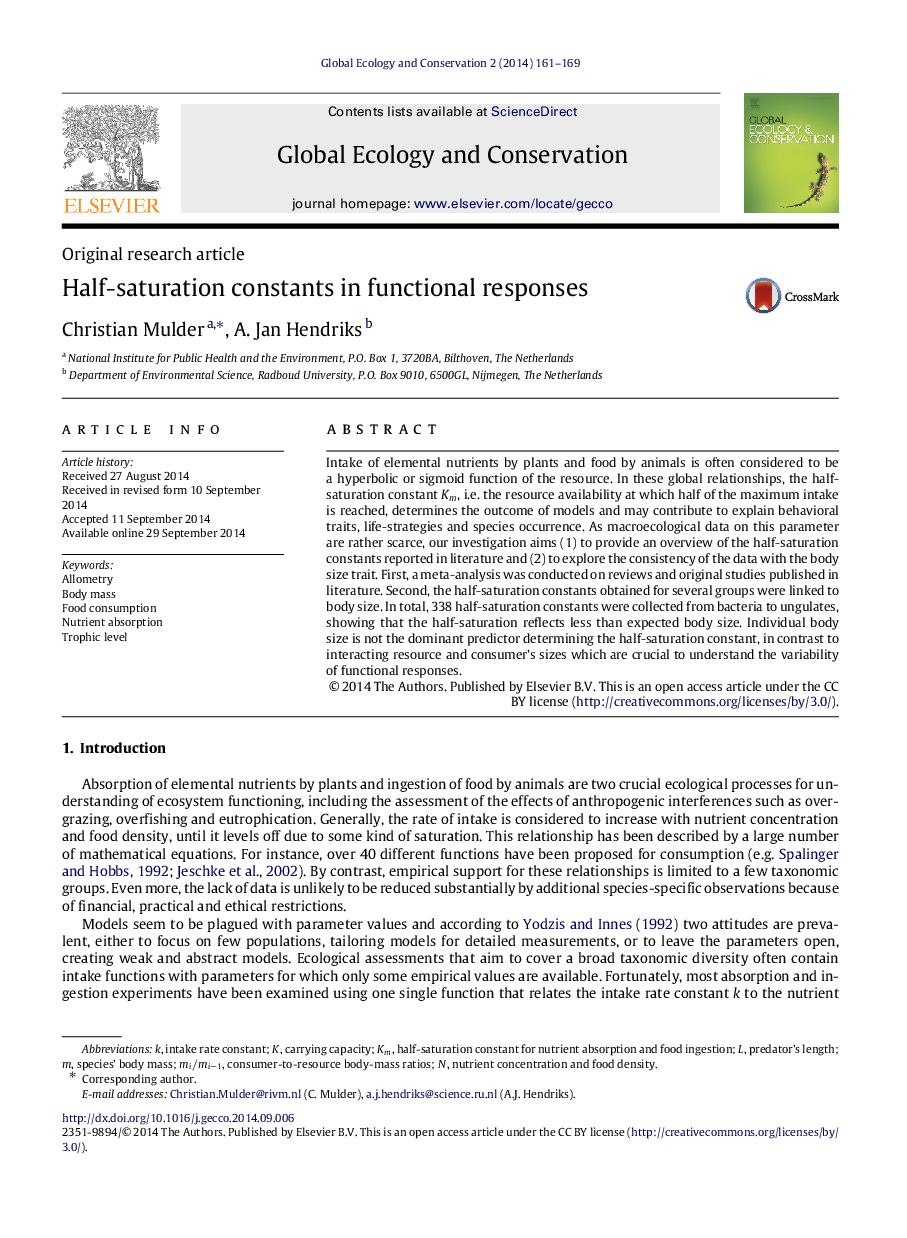| Article ID | Journal | Published Year | Pages | File Type |
|---|---|---|---|---|
| 4379679 | Global Ecology and Conservation | 2014 | 9 Pages |
Intake of elemental nutrients by plants and food by animals is often considered to be a hyperbolic or sigmoid function of the resource. In these global relationships, the half-saturation constant KmKm, i.e. the resource availability at which half of the maximum intake is reached, determines the outcome of models and may contribute to explain behavioral traits, life-strategies and species occurrence. As macroecological data on this parameter are rather scarce, our investigation aims (1) to provide an overview of the half-saturation constants reported in literature and (2) to explore the consistency of the data with the body size trait. First, a meta-analysis was conducted on reviews and original studies published in literature. Second, the half-saturation constants obtained for several groups were linked to body size. In total, 338 half-saturation constants were collected from bacteria to ungulates, showing that the half-saturation reflects less than expected body size. Individual body size is not the dominant predictor determining the half-saturation constant, in contrast to interacting resource and consumer’s sizes which are crucial to understand the variability of functional responses.
